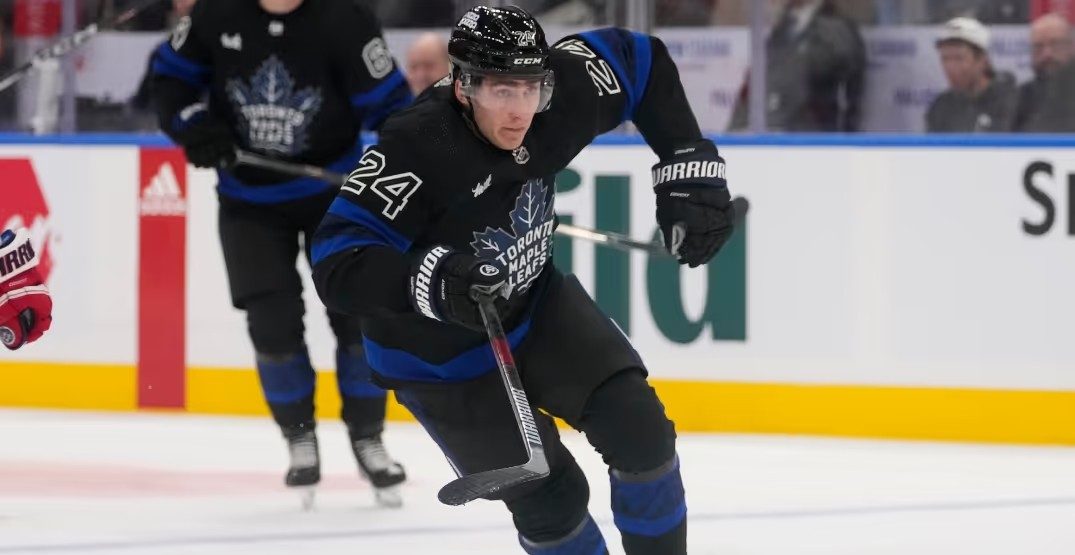The Maple Leafs announced the signing of forward Connor Dewar to a one-year, $1.18 million contract, avoiding an arbitration hearing between the two sides. Dewar will again be an RFA next summer after the contract expires.
The Leafs acquired Dewar at the 2024 trade deadline for a fourth-round pick in 2026. Unlike most of their recent trade deadline acquisitions, they will retain his services for at least the following season.
It marks a tidy piece of business for the Leafs as they can now evaluate Dewar for a full season with the club and will retain his rights should the fit work well with their new head coach. It’s also a relatively cheap cap hit for a forward who scored 11 goals last season; AFP projected Dewar would make over $1.4 million for two seasons and head to unrestricted free agency after the conclusion of his deal.
There were 14 players in total who filed for arbitration across the league this offseason, and to date, Dewar has signed the cheapest extension. Beck Malenstyn, who just posted a six-goal, 21-point season in 81 games, signed a two-year x $1.35 million AAV earlier today. Jack Drury, who recorded an eight-goal, 27-point season, signed a two-year x $1.725 million AAV contract. Joe Veleno, who scored 12 goals and 28 points, signed a two-year x $2.275 million AAV contract.
Between his time in Toronto and Minnesota last season, Dewar put up 11 goals and 19 points in 74 games while averaging 11:39 per night and shooting a fairly high (relative to his skill level) 14.3 percent. Dewar has some ability to play center as well as left-wing and has shown some utility as a penalty killer. Shortly after the Leafs acquired Dewar, Mitch Marner was absent for nine games due to injury, during which time the Leafs‘ penalty kill went 24 for 28. Dewar was second among forwards in shorthanded time on ice per game during this stretch, playing all nine of those games and averaging 2:33 per night.
At five-on-five, Dewar formed a solid fourth line alongside David Kampf and Ryan Reaves. In roughly 60 minutes together at five-on-five, the trio started just 38.46 percent of their faceoffs in the offensive zone but held serve in shot attempts at 52 percent, won the expected goals at a whopping 63.61 percent, and were 3-3 in actual goals.
Dewar was a big part of the line’s success and represented a massive upgrade on the now-unqualified and departed Noah Gregor. With Gregor on the line, the trio was outscored 2-10 at five-on-five and was generally buried shift after shift. Like Gregor, Dewar brought speed to the line, but he also proved to be an effective forechecker and cycler, leading to all sorts of extended zone shifts for the fourth unit where they hemmed in their opposition, although they lacked enough finish to make other teams pay. We will see if the Leafs adding some additional skill to their back end will help this line score a little more moving forward.
It’s also noteworthy that Dewar was the rare Maple Leaf who actually played through a significant injury in the playoffs, as he required shoulder surgery this offseason. Playing through pain is part of the grind of postseason hockey, and Dewar apparently can and will do it. Even though he was hampered by a significant injury, Dewar made a nice pass to create a David Kampf goal in Game 1 of the series and was quietly effective in his six games against Boston in the first round. The Dewar-Kampf-Reaves line was enough of a problem for Bruins head coach Jim Montgomery early on that he switched the matchups partway through the series.
The cap picture moving forward
The Leafs’ cap situation hinges on Jani Hakanpaa’s status. PuckPedia announced last week that the reported Hakanpaa contract—two years x $1.5 million—has yet to be registered. Assuming this is the case, the Leafs have roughly $1.275 million left in cap space, with Nick Robertson counting as their only notable remaining RFA.
The cap figure also includes Conor Timmins on the roster, and if they can fit Robertson in that remaining cap space, it would give the Leafs a 13-forward, seven-defensemen roster to start the season for the first time in ages. For a team that leads the league in back-to-back games as a tired opponent, it’s critical to keep extra bodies around and load manage as required. It also gives them the flexibility to manage older veterans like Reaves and even Chris Tanev instead of forcing them to play every game as they did in recent years with aging veterans like Mark Giordano.
If the Hakanpaa contract is indeed signed and sealed and he’s ready to start the season, it would leave the Leafs with about 875K of cap space, which should not leave enough room to sign Robertson unless they really play hardball and try to force him to sign his $813,750 qualifying offer. It would leave enough cap space should a young player such as Fraser Minten or Nikita Grebonykin make the team out of training camp—but, notably, it’s not enough space for Easton Cowan.
That’s how tight the cap situation is, and that’s why it’s important to squeeze as much value as possible out of the RFAs where appropriate. The Leafs, based on the comparables, did very well here to sign Dewar to a cheap enough contract where it is almost entirely buriable. It leaves them with ample wiggle room and locks in a cost-controlled player who was fairly effective in his role after arriving in Toronto.


































